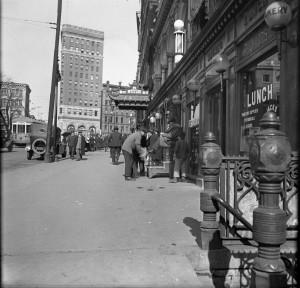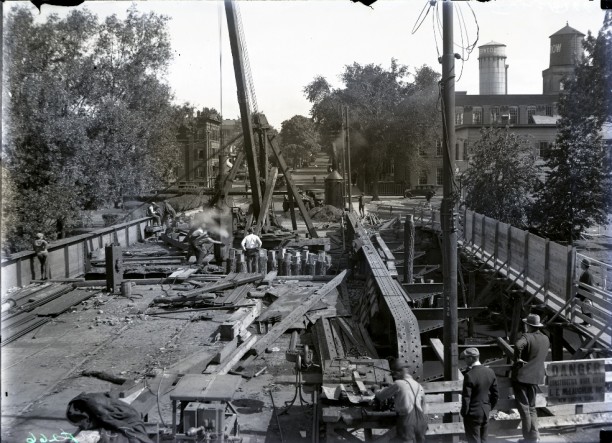By Brenda Miller
How does a colonial town become a modern city? How does it become an essentially urban location, and what are the markers of its transformation? To answer such questions about Hartford, the signposts that researchers of all ages and backgrounds use are in the collections of the Hartford History Center. A particularly rich trove of material is contained within the Hartford Town and City Clerk Archives. This collection spans from 1639 to 2010, though the bulk of its documents are from the 17th, 18th, and 19th centuries.
Hartford Town and City Clerk Archives Bring Past to Life
The Hartford Town and City Clerk Archives shed light on changes in Hartford’s built environment—and in the everyday lives of the people who have worked and lived there over the centuries. For example, materials in the collection enable us to track the development of Hartford’s streets and city government. We can also determine who paid taxes—and on what. The taxable property documents from the 1800s are particularly rich in detail. Whereas the grand list for a given year provides a summary of taxes due, individual taxable property lists note what each citizen owned, including houses, clocks, furnishings, and carriages as well as stocks, bonds, and animals (cows, bulls, dogs, etc.).
The collection also includes commission and council reports, court records and legal disputes, cemetery maps, voting records, and voluminous paperwork that accompanied the construction of buildings, parks, and homes within the city. Such documents can tell us much about changing priorities, sources of conflict, and civic achievements. Even less obvious sources, such as dog licensing and trash collection records, add detail to our understanding of the capital city’s past.
To say the collection is vast would be an understatement. The number of individual documents for the 1860s and ‘70s alone is so mammoth that it has been called the “most documented statement of worth of a city and of its citizens known to date.” And that’s only two decades out of three centuries worth of paper!
The Making of a Research Collection

State Street, Hartford, ca. 1920 – Hartford History Center, Hartford Public Library
When the city government moved into the Municipal Building in 1915, it also moved all of the files from the Hall of Records. Over the next 90 years, additional records and documents were added to the Hartford Town and City Clerk’s vault, compressing earlier materials into the corners or to the backs of shelves and other storage units. New files kept going into the vault, but nothing seems to have left! This resulted in unusually thorough documentation of more than 300 years of Hartford history.
In time, the Town and City Clerk’s office received a grant to hire an archives, records, and historical collections management group to survey the material in the vault and propose strategies for its upkeep. The recommendations called for older archival and historical documents to be identified, cleaned, and preserved from further wear, tear, and environmental aging by being placed into acid-free folders and boxes specially designed to protect such documents. Additionally, the materials were to be organized into appropriate record groups so that future generations could more easily find specific items.
Hartford History Center Charged with Opening Collection to the Public
With an additional grant in 2006, the work of preserving and organizing the vault’s contents began, and in 2010 the collection came into the care of the Hartford Public Library’s Hartford History Center. Today, an online finding aid for the records makes them immediately accessible to the public. For students, scholars, and others researchers wanting to investigate the history of a specific street or how a city council decided to build a bridge, these archives are an incomparable resource. Additionally, more than 1,000 images of Hartford as it looked 100 years ago have been created from glass-plate negatives. (Before the introduction of film, glass was one medium photographers used to capture images that could then be made into prints.)
Many of the glass plates are clearly identified and can be geo-referenced, allowing researchers to more easily match images with relevant documents and present-day locations. Using the collection, it is possible, for example, to trace the confluence of transportation modes as the city made the transition from horse to automobile. Likewise, the structures depicted—from riverfront tenements to palatial homes on Albany Avenue, from the Russian Baths to the storefronts of commercial titans on Main Street—tell historians a story of a vitally diverse city.
Brenda Miller is curator of the Hartford History Center at the Hartford Public Library.









